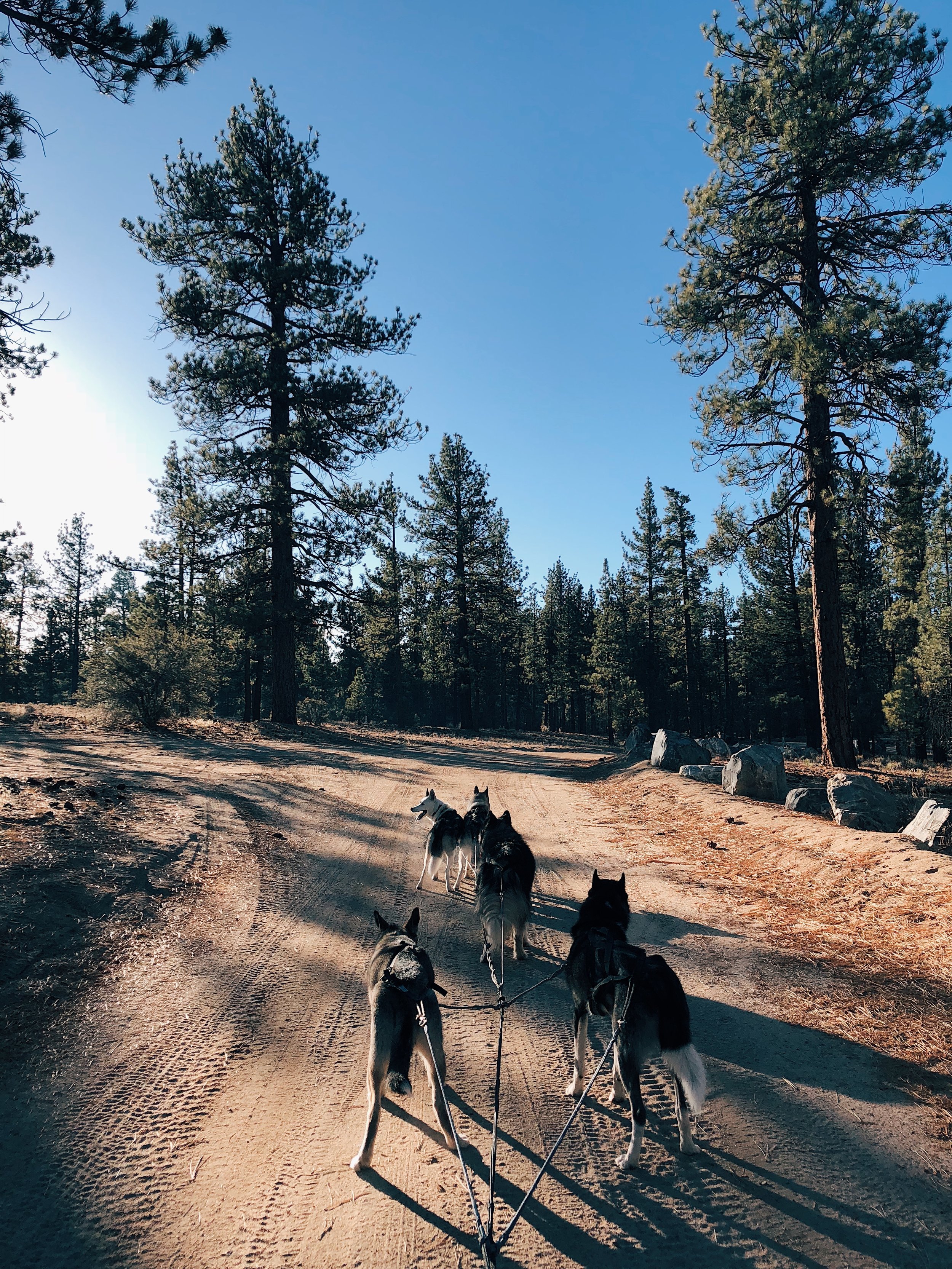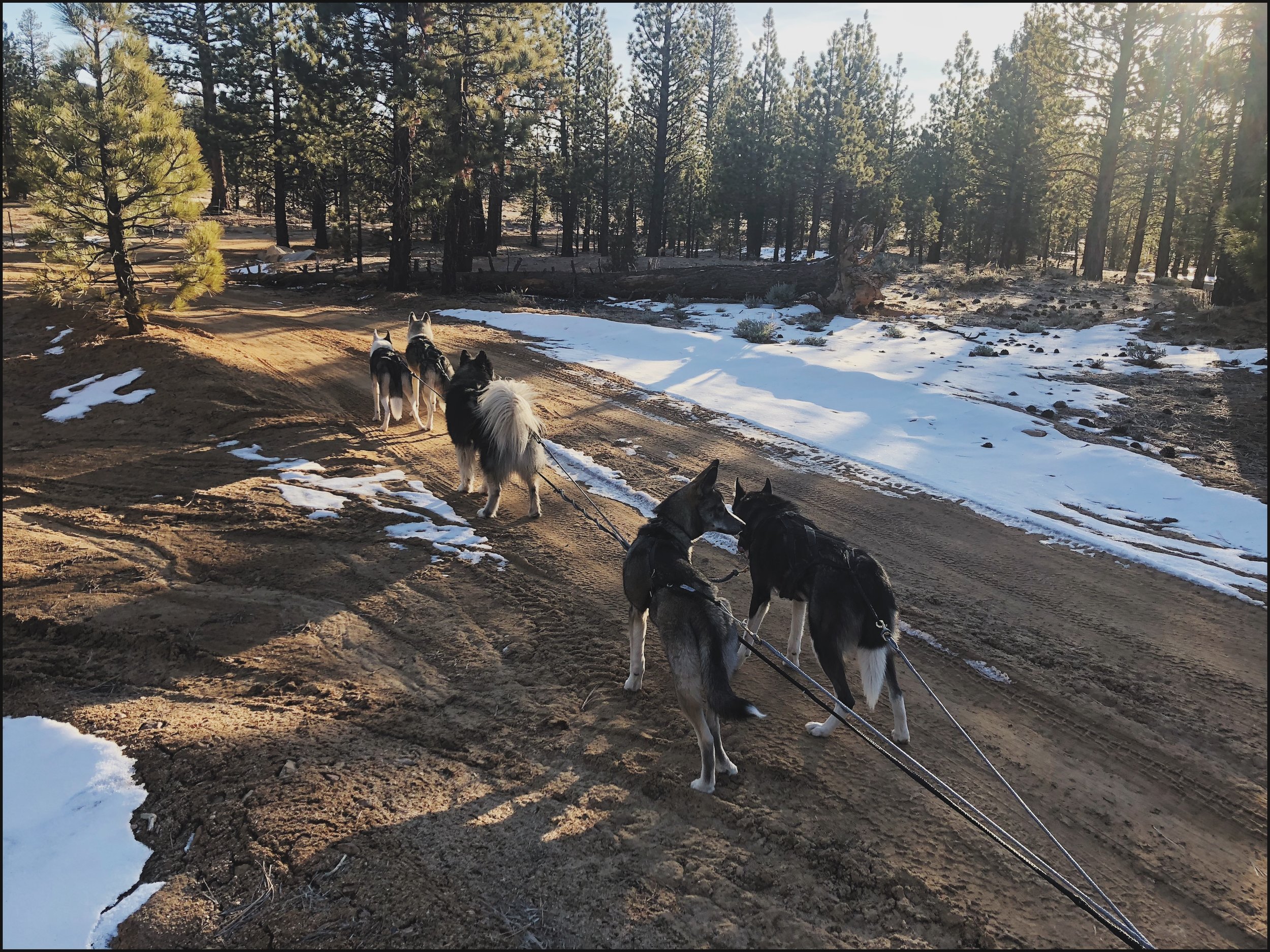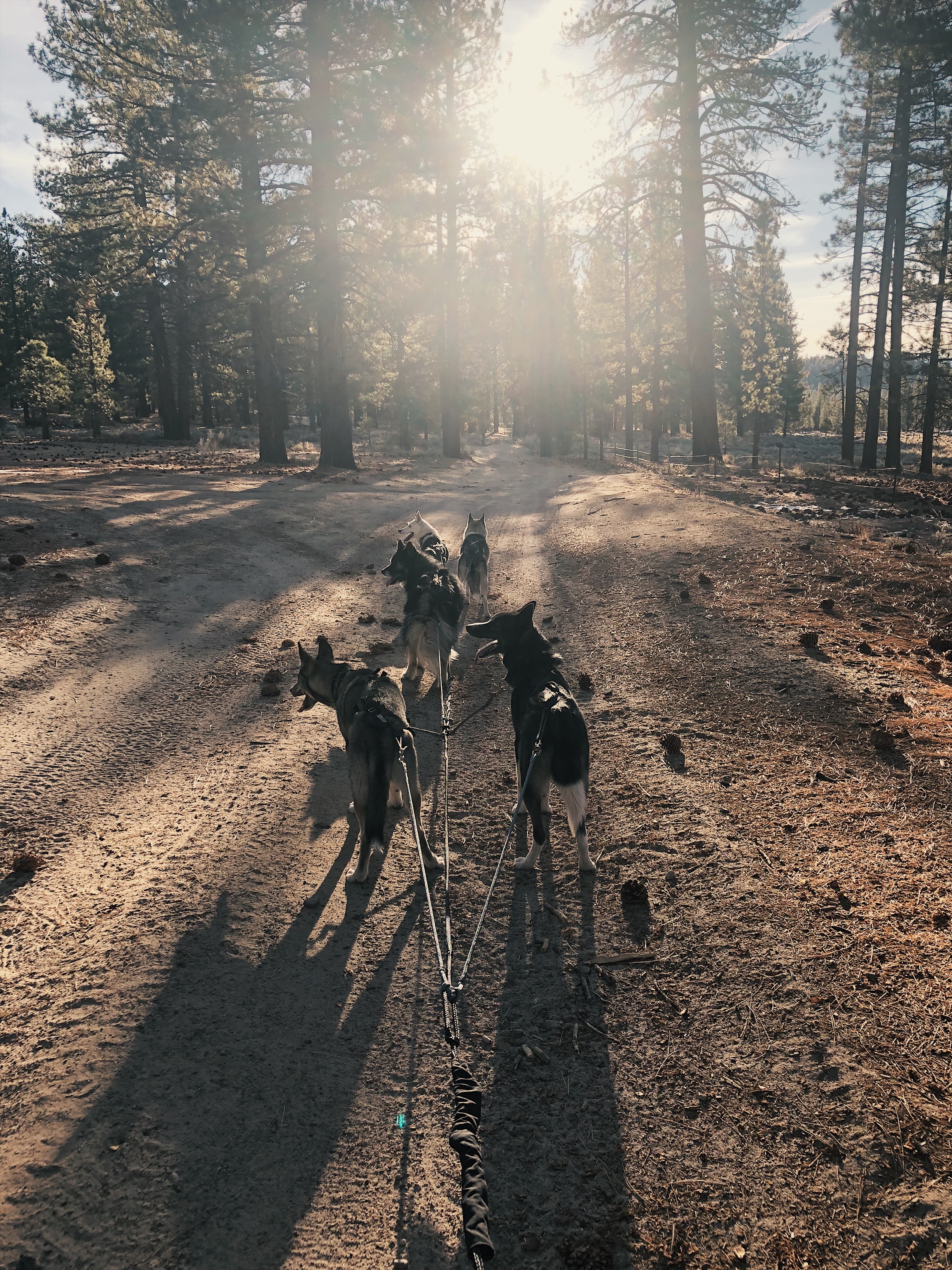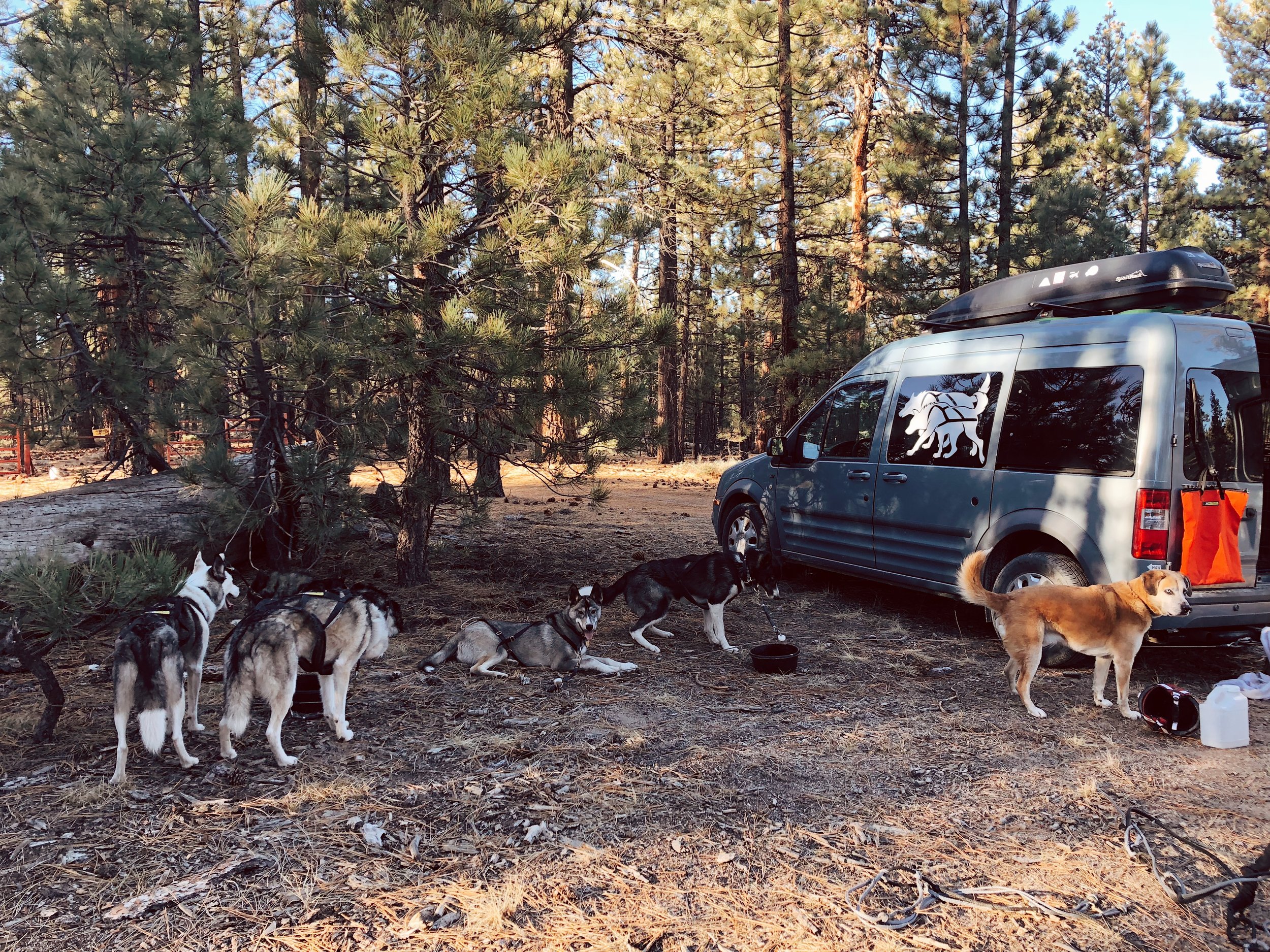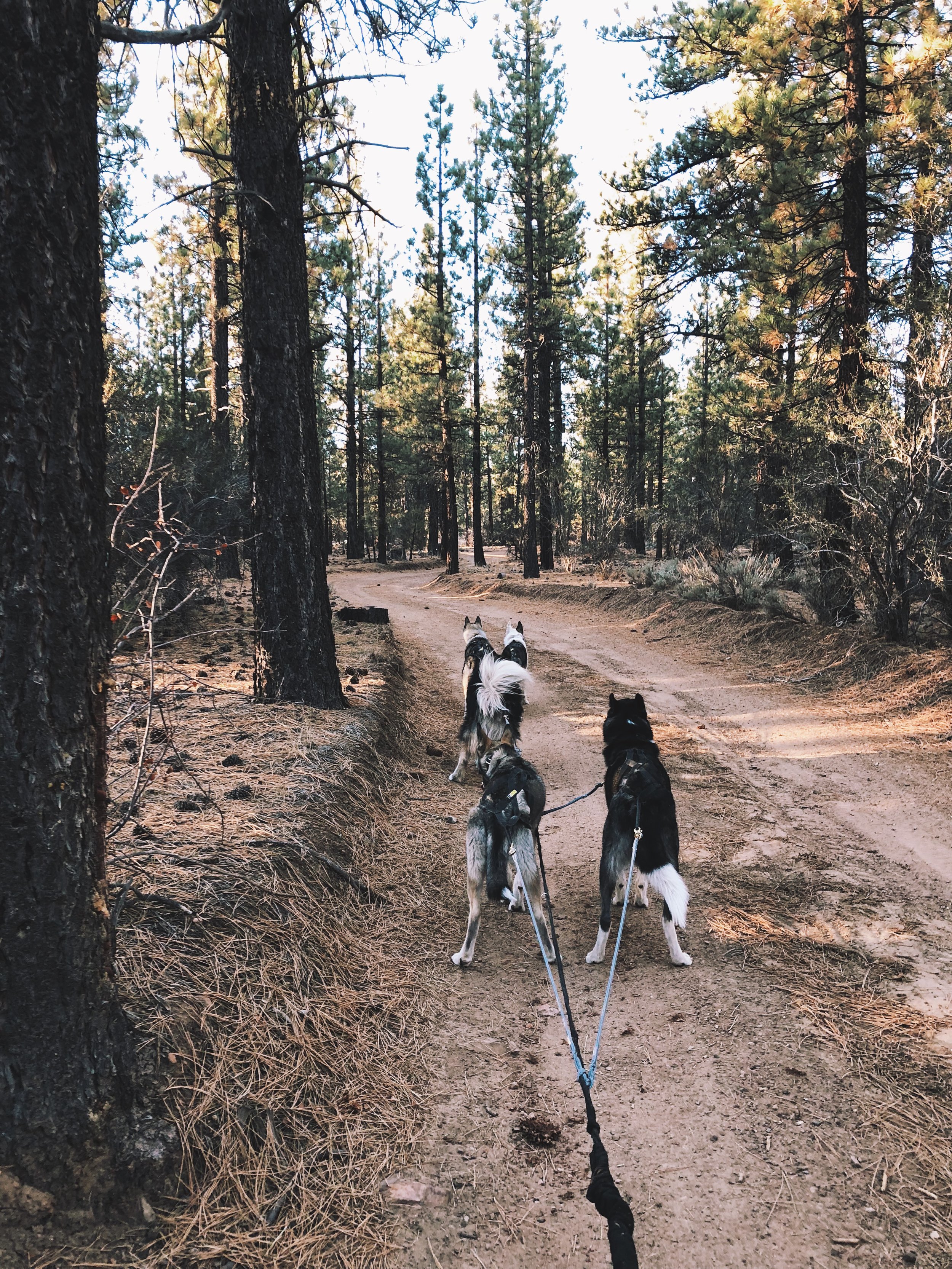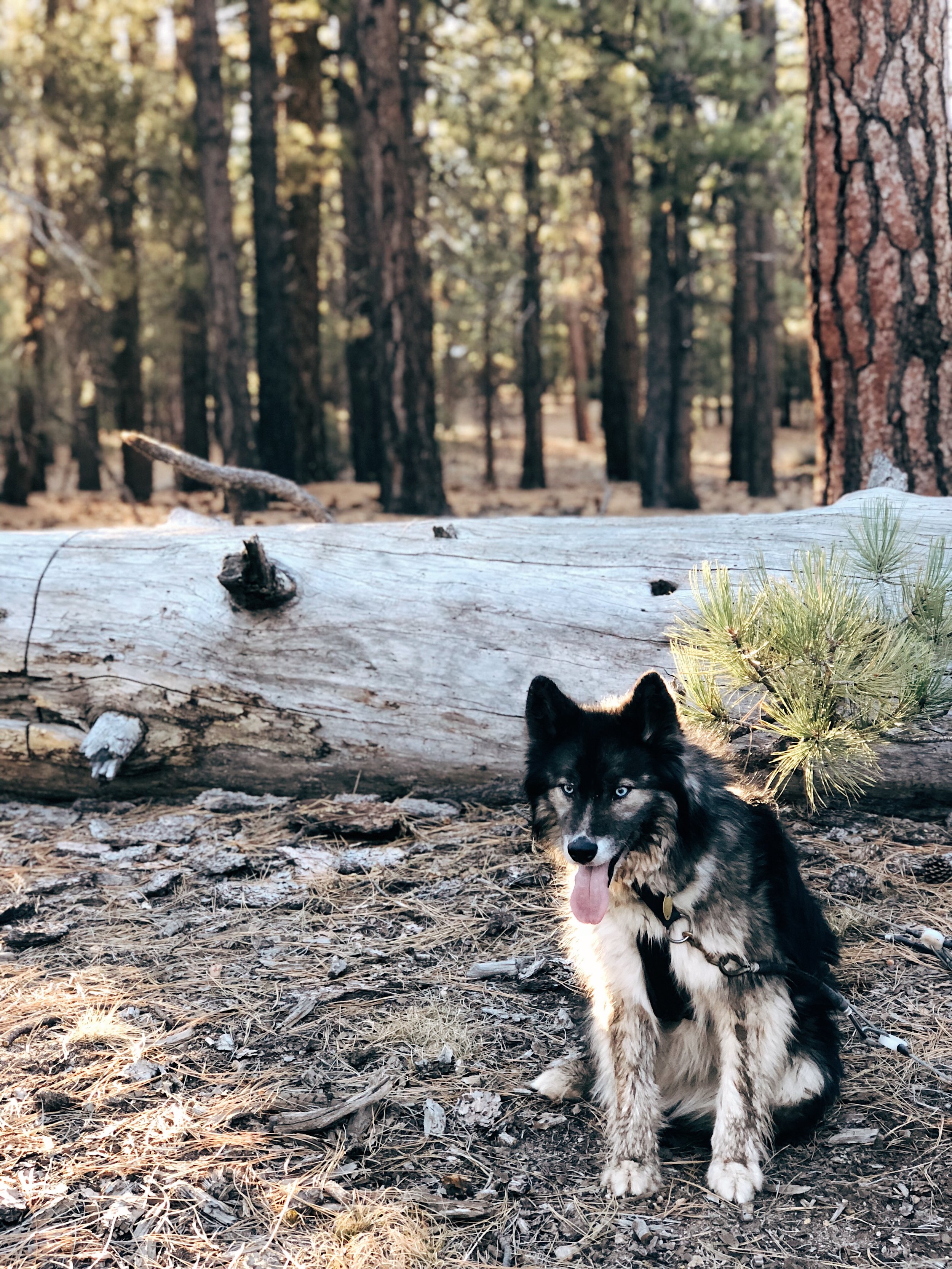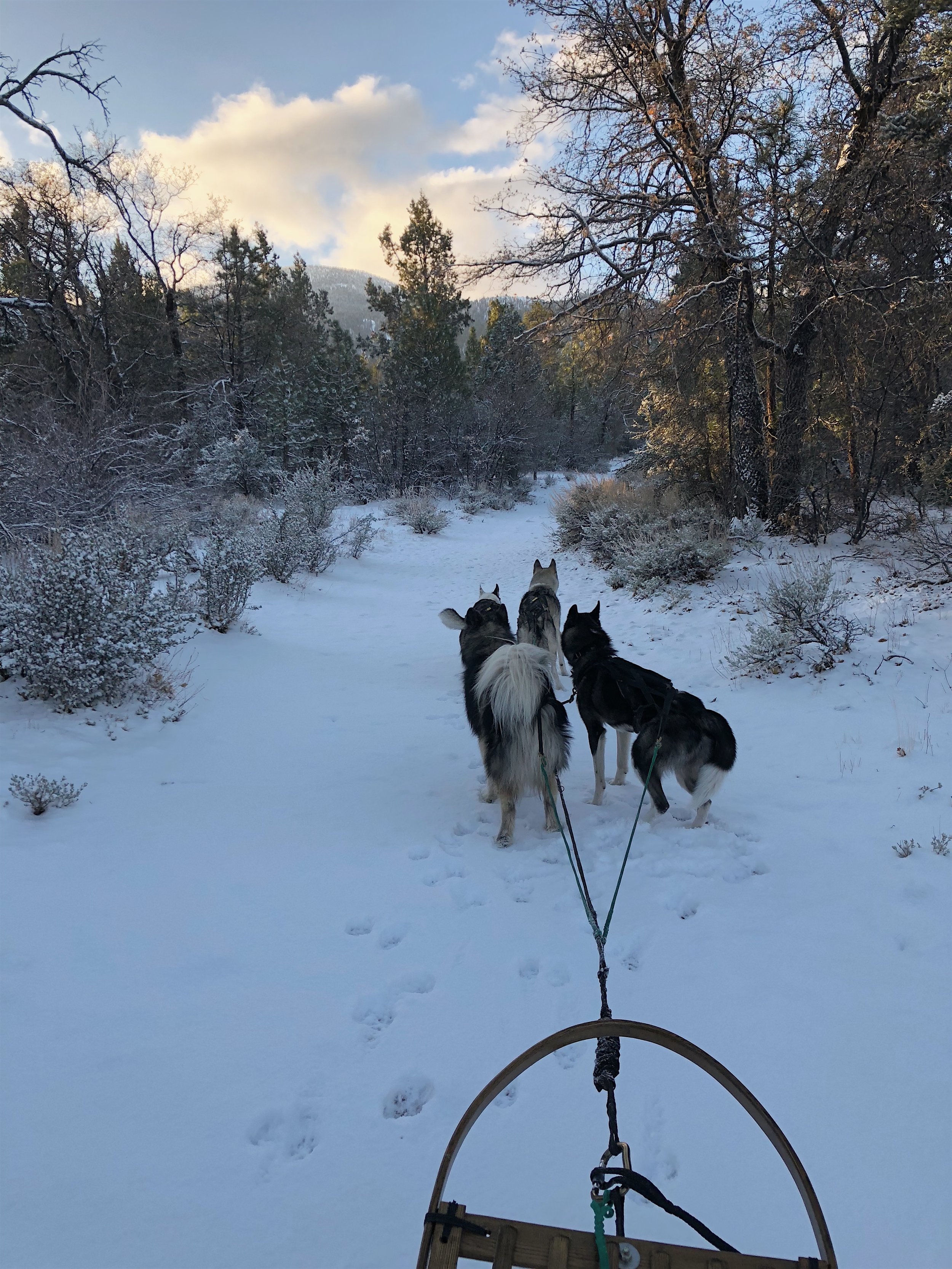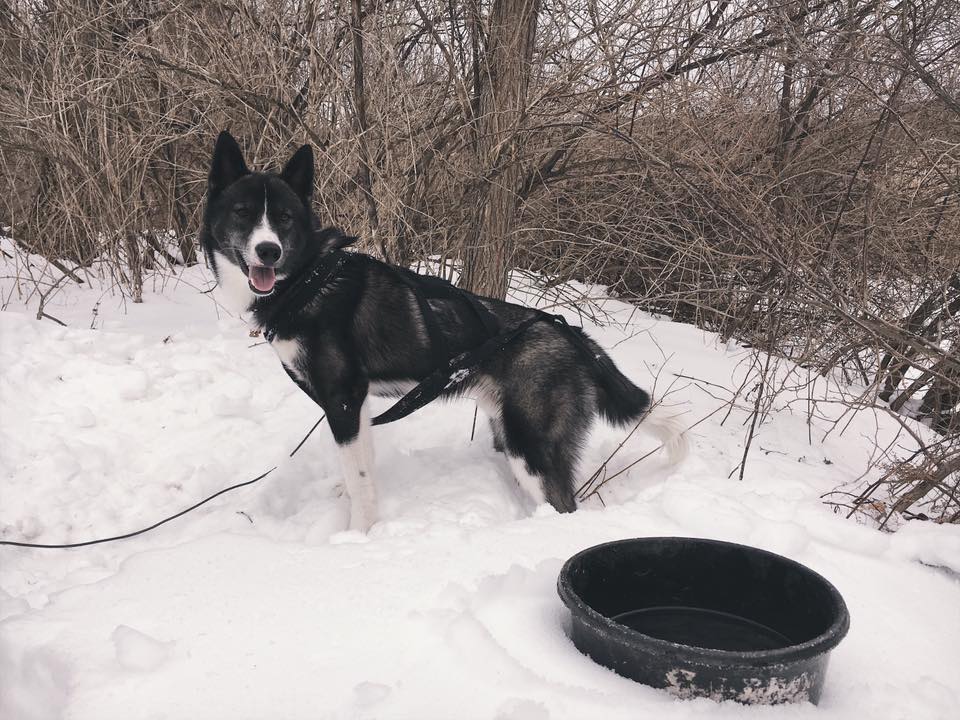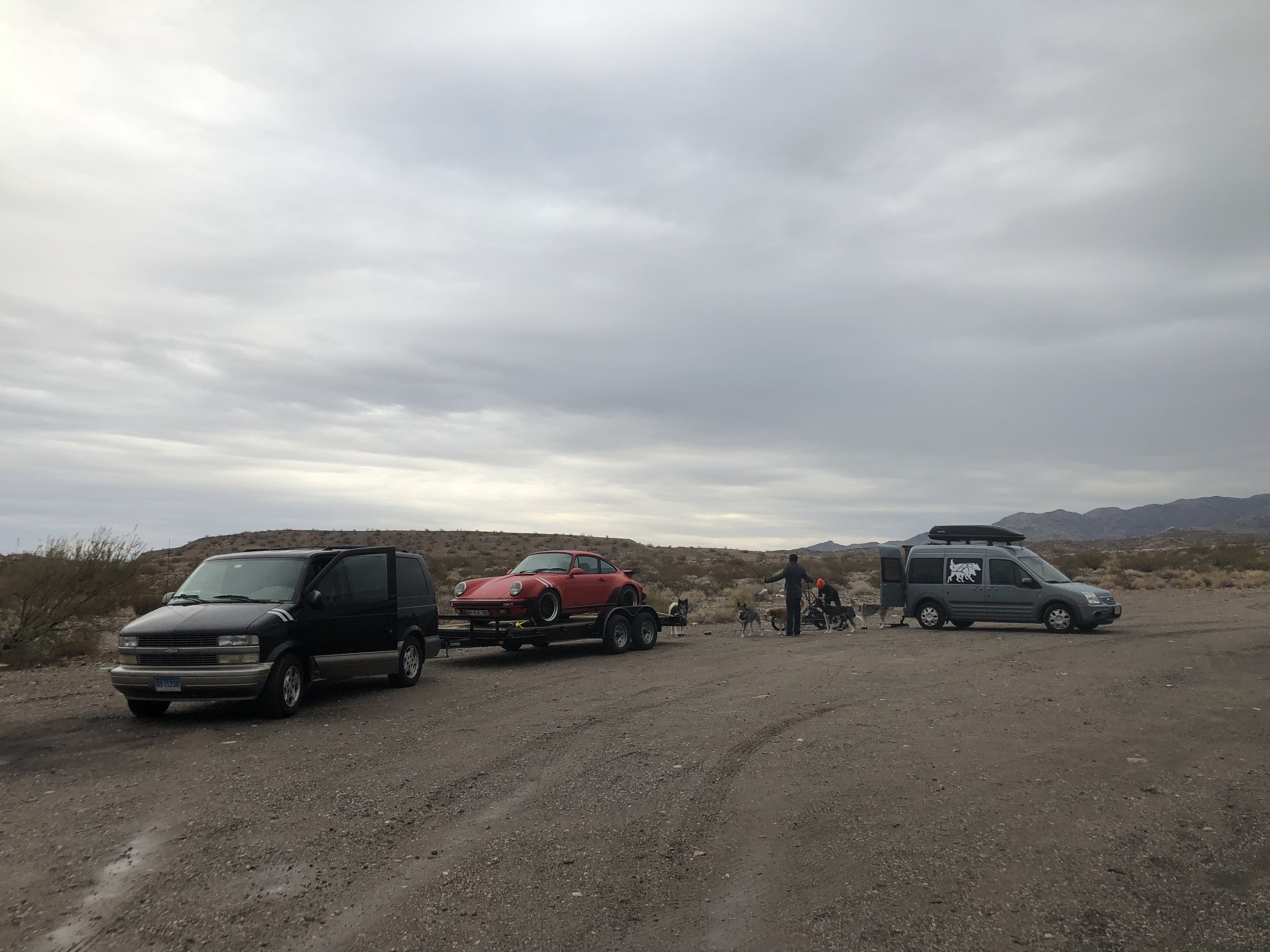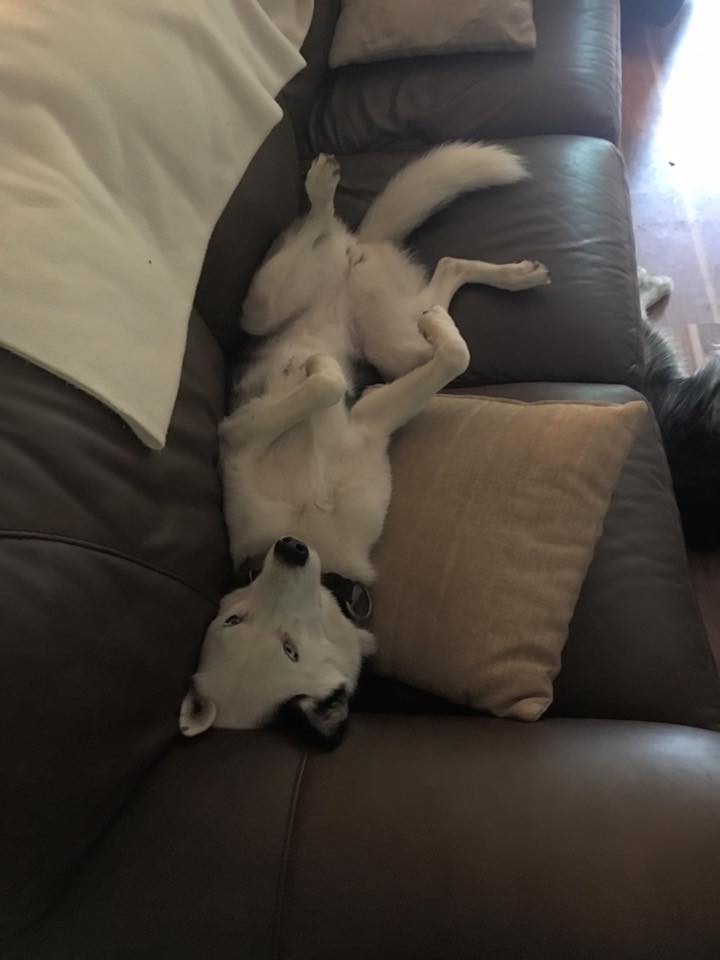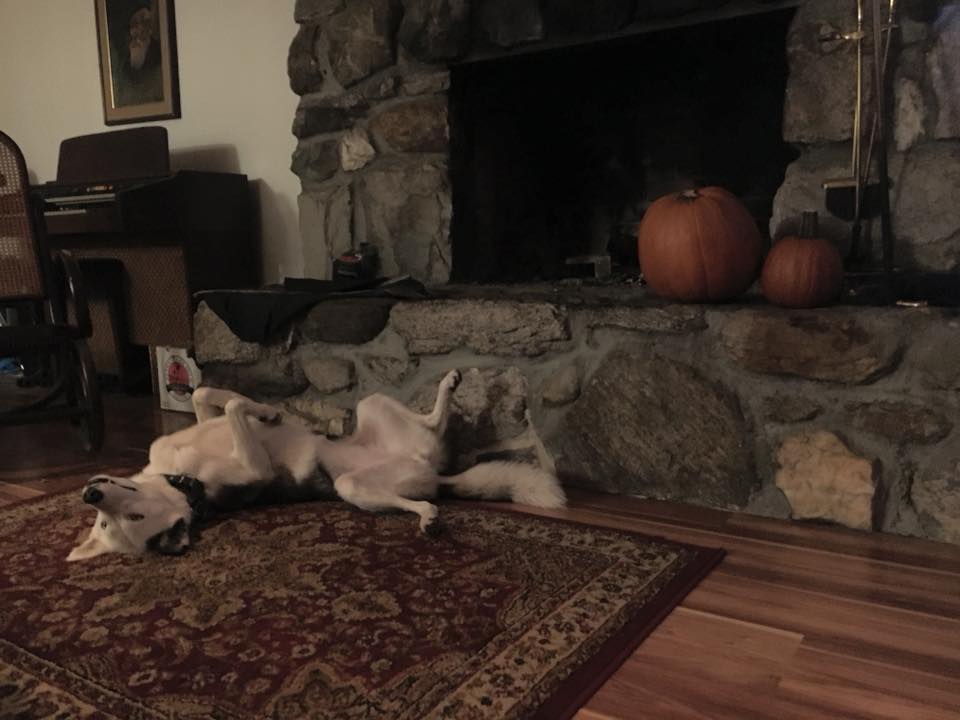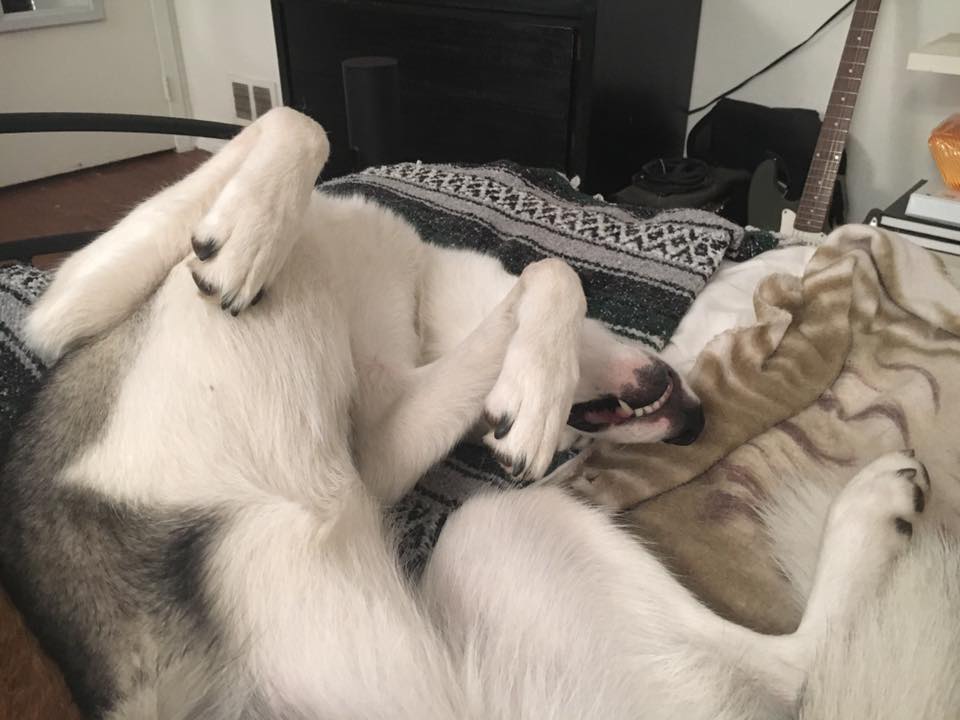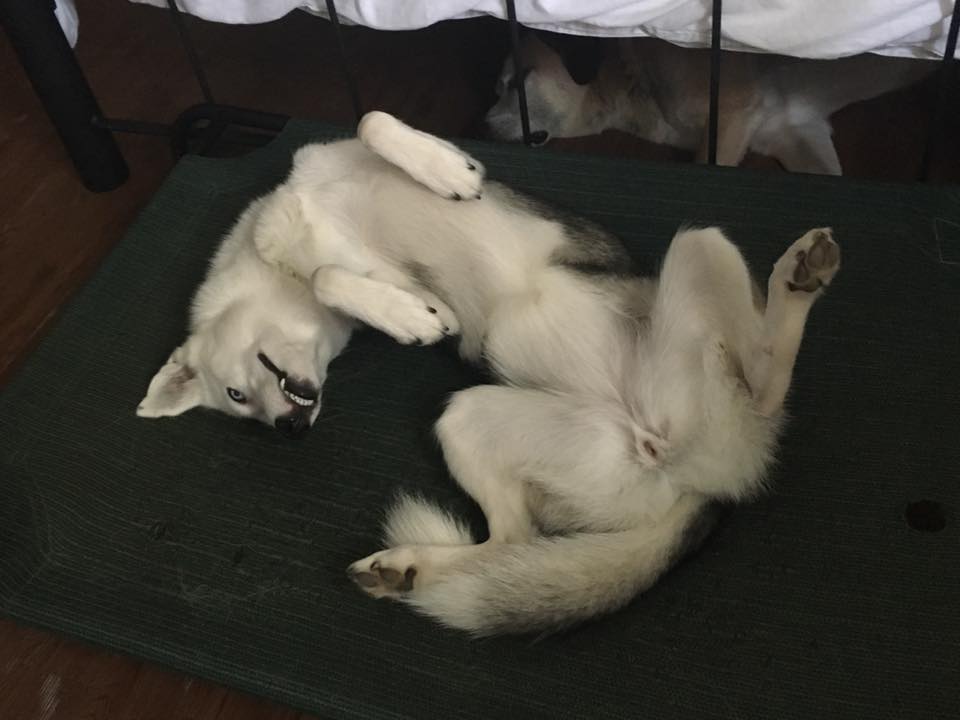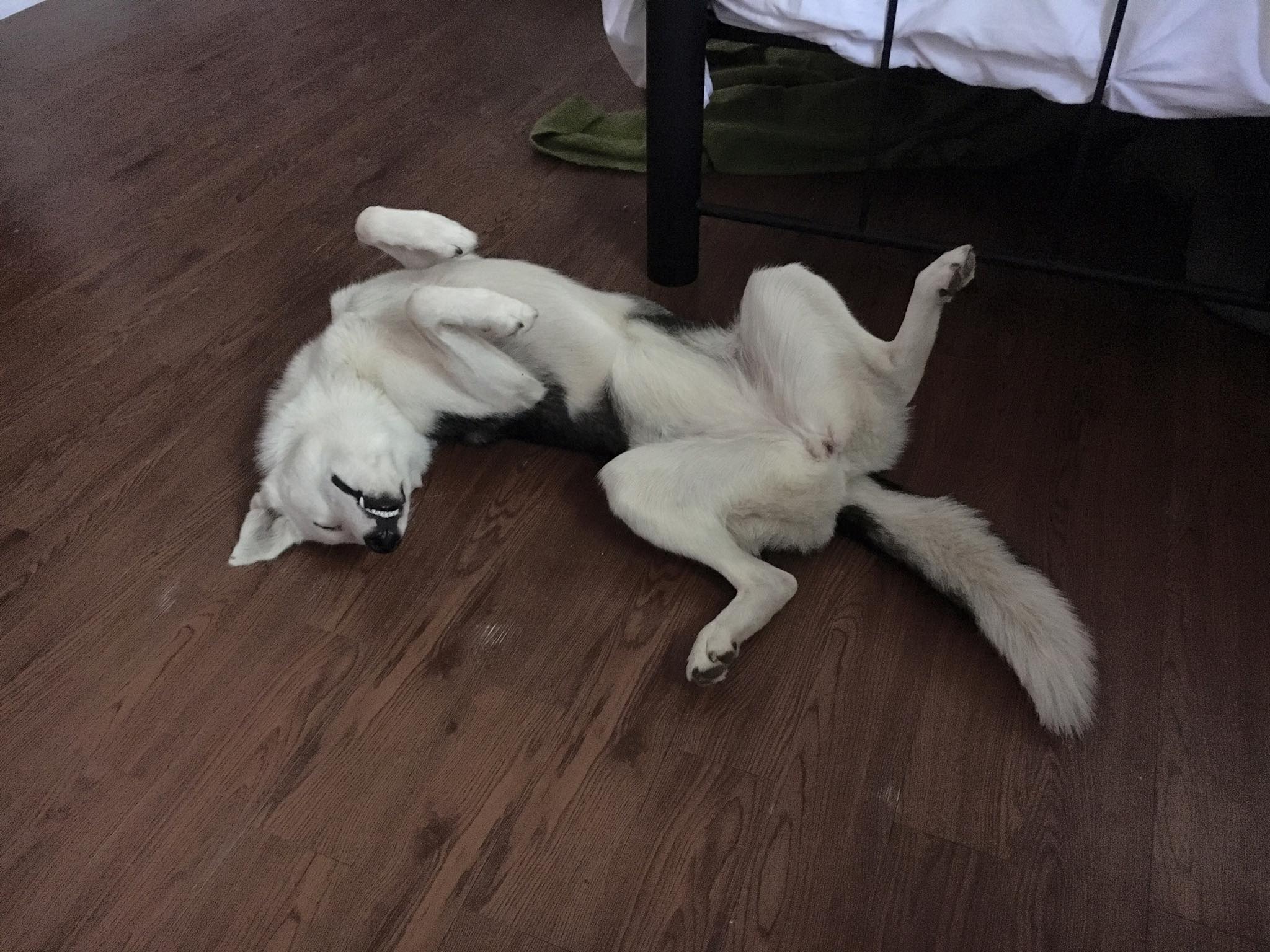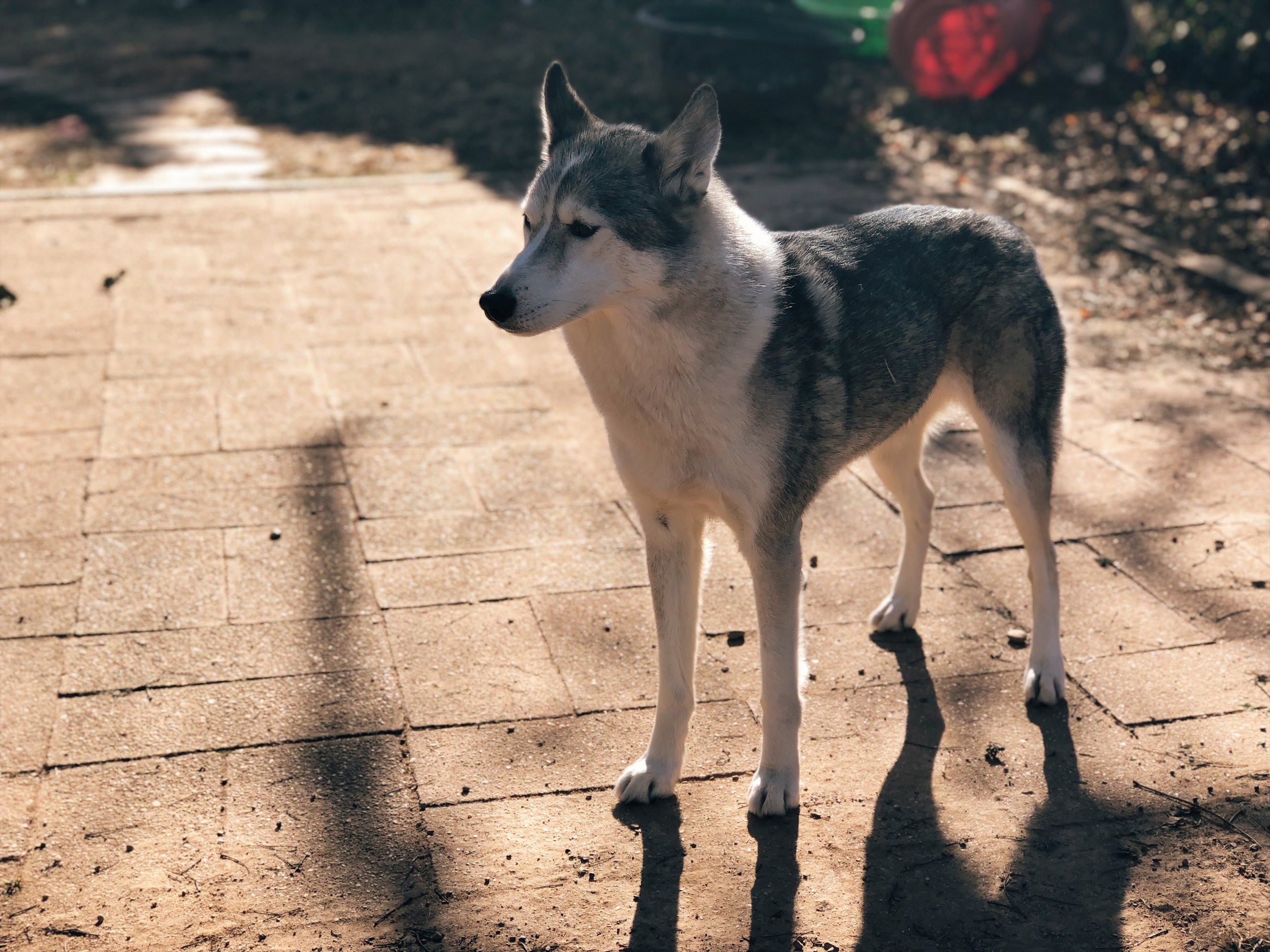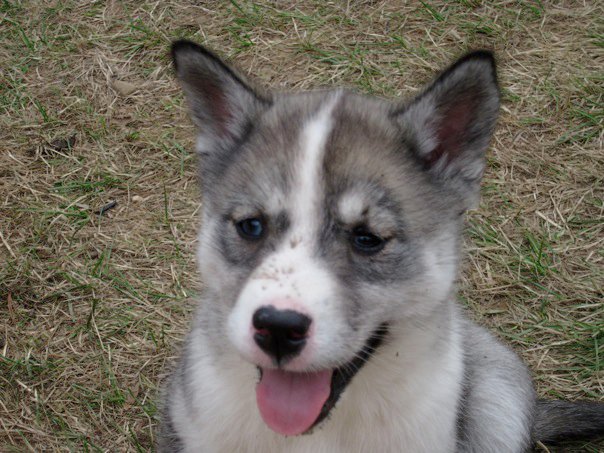We’ve been living in the Southern California mountains for a month now and here’s what I’ve learned:
- It’s oppressively sunny. Like, every day.
- It’s dry, too. (Lotion expenses are on the rise.)
- You’ll feel winded and lightheaded going up the stairs when you live at 7,200 feet.
- The dogs feel no difference and demand even more activity given the smaller yard size.
- California income tax is the highest in the country. (Who knew? A lot of people. Not me.)
- Dry shampoo BURSTS out of the bottle at high altitudes.
This has been an unusually warm and snowless winter for Big Bear, as the locals tell me when they find out I’m a dog musher. It’s been below freezing at night and in the morning, but the day heats up quick—it’s been in the 60s most afternoons. Aside from the snow storm we arrived in and one other squall (both happened at night) there’s been barely a cloud in the sky for a month straight.
We’ve settled into a pretty steady routine of mushing the local trails during the week. On weekends, we go to Holcomb Valley for some different scenery and faster, smoother runs.
Hubble has begun some very low-key training with the team. He took to the puppy x-back without issue and did well with cani-cross at six months. As he gets older, I’ll continue to integrate him into our runs, making sure that he sets the pace and we keep mileage low. (Worth noting—when and how you introduce a new dog to mushing is a hotly debated topic that I already wrote about and don’t intend to dive into again.)
Since we're keeping things slow, I attempted a brief 6-dog team by throwing Dexter back into the mix. We only went around two and a half miles and our average speed was less than four miles per hour, but it was thrilling to look out at six dogs, working together.
In other dog-related news, I’ve switched the team from Annamaet Extra 26% to Inukshuk 32/32. Since we’re running four or five days a week now (Saturday and Sunday, Tuesday and Thursday, plus one additional day), upping the fat content should help the dogs stay fit. I’ve also ordered a tub of fat that I plan to freeze into snack-sized cubes for trail boosts. Poop quality yet to be determined.
Aside from dog-stuff, the humans have made a couple treks down the mountain into the heat of the Inland Empire. The ride is long but beautiful. The strip malls are not. It’s very weird to mush in a 28°F morning, and in the same day, come out of a movie to a 75°F evening, but I’ve done it. And I don’t mind it.
Things are a bit more simple these days. I’m no longer bouncing between houses (Pawling, Brooklyn, central New Jersey). I don’t have many plans, but it's kind of nice. I've set a lot of personal goals for myself out here (freelance design work, make time for art, write more) but, so far, I've been content to just run dogs more.
Despite my semi-secluded lifestyle, I am looking forward to friends visiting—at least one per month for the next few months, it seems! I'm also looking forward to snow on Valentine’s Day. Even if the storm is a flop, temperatures are looking cooler for the next few days. I’ll take it.




